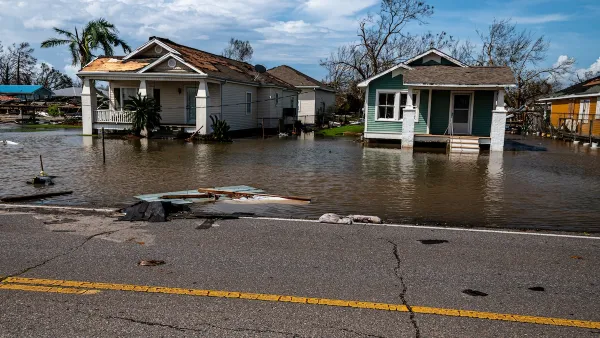Louisiana's eroding and sinking coastline also happens to be the site of a major proportion of America's oil infrastructure.
"Port Fourchon [Louisiana] is home to pipelines, miles and miles of them. There are the feeders from the Louisiana Offshore Oil Port, which accommodates the massive tankers that deliver 11 percent of the nation's foreign oil. There are conduits that supply two of the nation's strategic petroleum-reserve facilities.
If the port seems like a mirage on the edge of the marsh, that may be because its permanence is anything but assured. The port sits in a region that, although it escaped the most cataclysmic destruction of Katrina and Rita, is being ravaged by two slow-moving but equally ruinous phenomena: erosion and the sinking of the land.
Some 25 square miles of Louisiana have been collapsing into the gulf each year for three-quarters of a century. A total of 1,900 square miles, roughly the area of Delaware, disappeared between the 1930s and 2005, and another 217 square miles were pulverized into liquid by Katrina and Rita. And that land loss, says Ted Falgout, who has run Port Fourchon for 28 years, poses a growing threat not only to the people who live here but also to the U.S. energy supply.
Without Port Fourchon and its fleet of vessels bringing food, supplies, equipment, and reinforcements to platforms in the gulf, the U.S. would lose access to nearly a fifth of all the oil and gas it uses.
The problem afflicts all of southern Louisiana. As land turns to water, it is exposing thousands of miles of oil and gas pipelines that were built underground and were not designed to withstand water or waves."
FULL STORY: The next energy crisis

Planetizen Federal Action Tracker
A weekly monitor of how Trump’s orders and actions are impacting planners and planning in America.

Vehicle-related Deaths Drop 29% in Richmond, VA
The seventh year of the city's Vision Zero strategy also cut the number of people killed in alcohol-related crashes by half.

As Trump Phases Out FEMA, Is It Time to Flee the Floodplains?
With less federal funding available for disaster relief efforts, the need to relocate at-risk communities is more urgent than ever.

Judge Reverses Federal Funding Freeze for EV Infrastructure
A federal judge ordered the Trump administration to release funding for the National Electric Vehicle Infrastructure Program, a $5 billion program aimed at improving charging infrastructure.

Santa Monica May Raise Parking Permit Fees
The city says the changes would help better manage curb space and support its sustainability goals.

Portland Housing Bond Created Nearly 5,000 Units, But Affordability Remains Out of Reach
Despite better-than-expected results from multiple local housing bonds, housing costs and homelessness remain top of mind for many Oregonians.
Urban Design for Planners 1: Software Tools
This six-course series explores essential urban design concepts using open source software and equips planners with the tools they need to participate fully in the urban design process.
Planning for Universal Design
Learn the tools for implementing Universal Design in planning regulations.
JM Goldson LLC
Custer County Colorado
Sarasota County Government
City of Camden Redevelopment Agency
City of Astoria
Transportation Research & Education Center (TREC) at Portland State University
Camden Redevelopment Agency
City of Claremont
Municipality of Princeton (NJ)


























